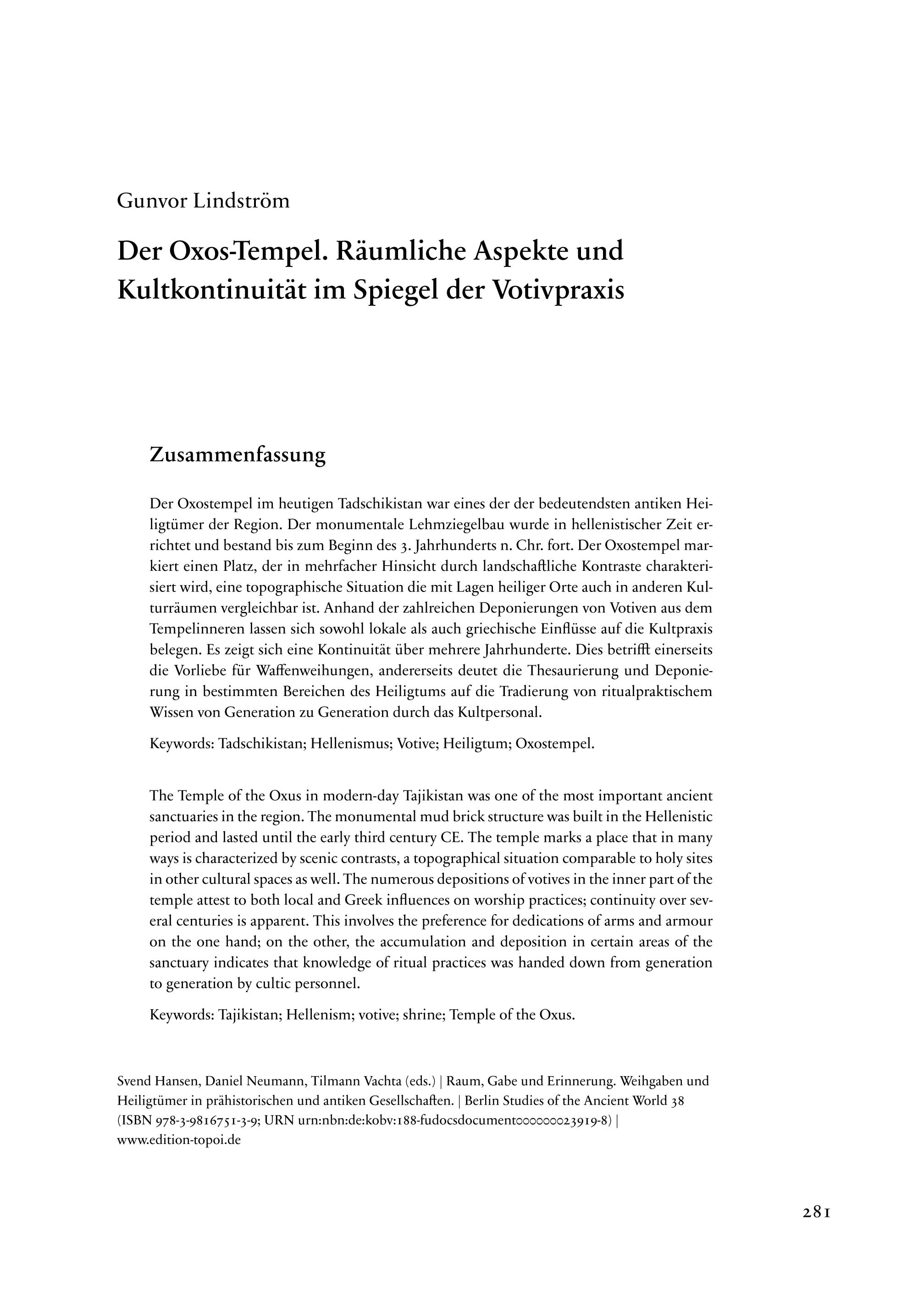Der Oxos-Tempel. Räumliche Aspekte und Kultkontinuität im Spiegel der Votivpraxis
The Temple of the Oxus in modern-day Tajikistan was one of the most important ancient sanctuaries in the region. The monumental mud brick structure was built in the Hellenistic period and lasted until the early third century CE. The temple marks a place that in many ways is characterized by scenic contrasts, a topographical situation comparable to holy sites in other cultural spaces as well. The numerous depositions of votives in the inner part of the temple attest to both local and Greek influences on worship practices; continuity over several centuries is apparent. This involves the preference for dedications of arms and armour on the one hand; on the other, the accumulation and deposition in certain areas of the sanctuary indicates that knowledge of ritual practices was handed down from generation to generation by cultic personnel.
Der Oxostempel im heutigen Tadschikistan war eines der der bedeutendsten antiken Heiligtümer der Region. Der monumentale Lehmziegelbau wurde in hellenistischer Zeit errichtet und bestand bis zum Beginn des 3. Jahrhunderts n. Chr. fort. Der Oxostempel markiert einen Platz, der in mehrfacher Hinsicht durch landschaftliche Kontraste charakterisiert wird, eine topographische Situation die mit Lagen heiliger Orte auch in anderen Kulturräumen vergleichbar ist. Anhand der zahlreichen Deponierungen von Votiven aus dem Tempelinneren lassen sich sowohl lokale als auch griechische Einflüsse auf die Kultpraxis belegen. Es zeigt sich eine Kontinuität über mehrere Jahrhunderte. Dies betrifft einerseits die Vorliebe für Waffenweihungen, andererseits deutet die Thesaurierung und Deponierung in bestimmten Bereichen des Heiligtums auf die Tradierung von ritualpraktischem Wissen von Generation zu Generation durch das Kultpersonal.

